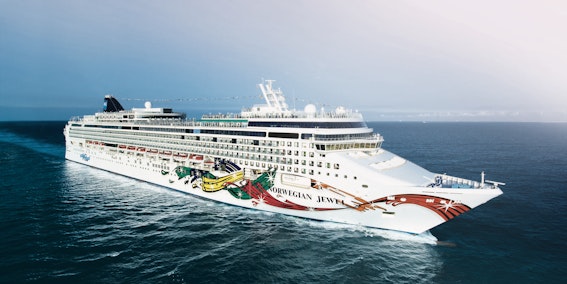More about Seattle
Why Cruise to Seattle?
The waterfront area offers everything from an aquarium to coffee and curiosity shops.
Transportation from the cruise port to downtown areas has improved, but is still cumbersome.
A little rain doesn't impede all there is to do and see here; it's worth extra time on land.
Seattle Cruise Port Facilities?
There are two cruise ship terminals in Seattle. (A third is expected at Pier 46 sometime in 2023.)
Bell Street Pier 66: Oceania Cruises and Norwegian Cruise Line passengers embark and disembark from the Bell Street Pier Cruise Terminal at Pier 66, on the downtown Seattle waterfront.
Smith Cove (Pier 91): Passengers traveling with Carnival Cruise Line, Celebrity Cruises, Holland America Line, Princess Cruises and Royal Caribbean International embark and disembark from the Smith Cove Cruise Terminal at Pier 91, which is located at the north end of the Elliott Bay waterfront, at the base of the Magnolia neighborhood and 2 miles from Seattle's downtown core.
There are limited "extra" amenities, beyond restrooms, inside either terminal.
Instead, go outside. To the left of the Bell Street Cruise Terminal at Pier 66, towards Pier 70, you'll find assorted coffee shops and restaurants along with the Seattle Art Museum's Olympic Sculpture Park. Head to the right, also along the waterfront, and you'll find more restaurants, plus the Seattle Aquarium, the Seattle Great Wheel, and beyond that, Ye Olde Curiosity Shop, a museum/souvenir shop that has been on the waterfront since 1899.
The Smith Cove Cruise Terminal at Pier 91 is in an industrial area that's starting to see breweries and eclectic eateries pop up within a 20-minute walk.
A concierge is available at both terminals to help with city information and luggage storage after cruises. Hours are typically 7:30 a.m. to 3:30 p.m. on cruise days.
Good to Know?
Rain: Yes, rain is common in Seattle, but locals don't let that keep them from doing anything they'd do on a sunny day, and neither should you. Pack light rain gear and a hat, and you should blend right in. Locals say they can spot a tourist by the umbrella. (That said, don't hesitate to use one if you need it.)
Walking Shoes: Less talked about than the rain is Seattle's many hills. Most have been leveled out over the years, but some sightseeing around town will have you hiking up steep inclines (and it's not always clear on Google Maps). Look for stairs, when possible, like the Pike Place Climb.
Cannabis: Recreational use of marijuana is legal in Washington State, but if you want to shop and partake there are rules you'll need to follow. Most important to keep in mind is that you cannot consume pot in public and it is illegal to take it out of the state or onto cruise ships. Most cruise ships also do not permit passengers to bring pot paraphernalia onboard.
Visa Requirements: Most cruises headed for Alaska make a stop in Canada. That means U.S. citizens will need to travel with a passport or a U.S. passport card, and passengers from certain countries will need to have a Canadian Visa. Be sure to check with your cruise line or travel agent for requirements to avoid being denied boarding.
Getting Around?
On Foot: Many of Seattle's waterfront attractions are a 15- to 20-minute walk from the Bell Street Pier Cruise Terminal at Pier 66. (Remember the hills.) The Smith Cove Cruise Terminal at Pier 91 is in an industrial area, so getting to attractions or restaurants will require a car or a cab.
By Public Transportation: Seattle's metro bus system (King County Metro Transit) is easy and safe to use, and it offers a helpful trip planning tool for getting around. Exact fare is required at the fare box when you board. The closest bus stop to the Bell Street Cruise Terminal at Pier 66 is on 1st Ave and Wall Street, about 0.3 miles from the terminal. The closest bus stop to the Smith Cove Terminal at Pier 91 is on the Magnolia Bridge, and is about 0.4 miles from the terminal.
The Seattle Center Monorail is a cheap ride that bounces conveniently back and forth along Fifth Avenue between Seattle Center (at the base of the Space Needle) and the Westlake Center in Downtown.
By Car: Taxis and ride-hailing car services (including Uber and Lyft) are plentiful and reliable to use around town. Passengers on cruises departing from Seattle usually fly into Seattle-Tacoma International Airport. Downtown Seattle and the cruise terminals can be reached via taxi, town car and shuttle van companies such as Shuttle Express and SpeediShuttle. Parking and traffic can be a problem in Seattle, so renting a car is not recommended unless you are heading to a destination out of the city like one of many nearby national parks.
Currency & Best Way to Get Money?
Seattle uses the U.S. dollar. There are no ATMs in the cruise terminals, but ATMs are plentiful in the city.
Travelex offers currency services at SeaTac International Airport and at Westlake Center, the downtown shopping center at 5th Avenue and Pine Street. Most banks exchange currency for a fee, but fee-free currency conversion vouchers (which can be used at downtown Wells Fargo locations) can be picked up at both downtown visitor centers.
Language?
English is the native language in Seattle, but it might be helpful to brush up on basic coffee lingo before you arrive so you can confidently order the correct caffeinated brew while in town.
























